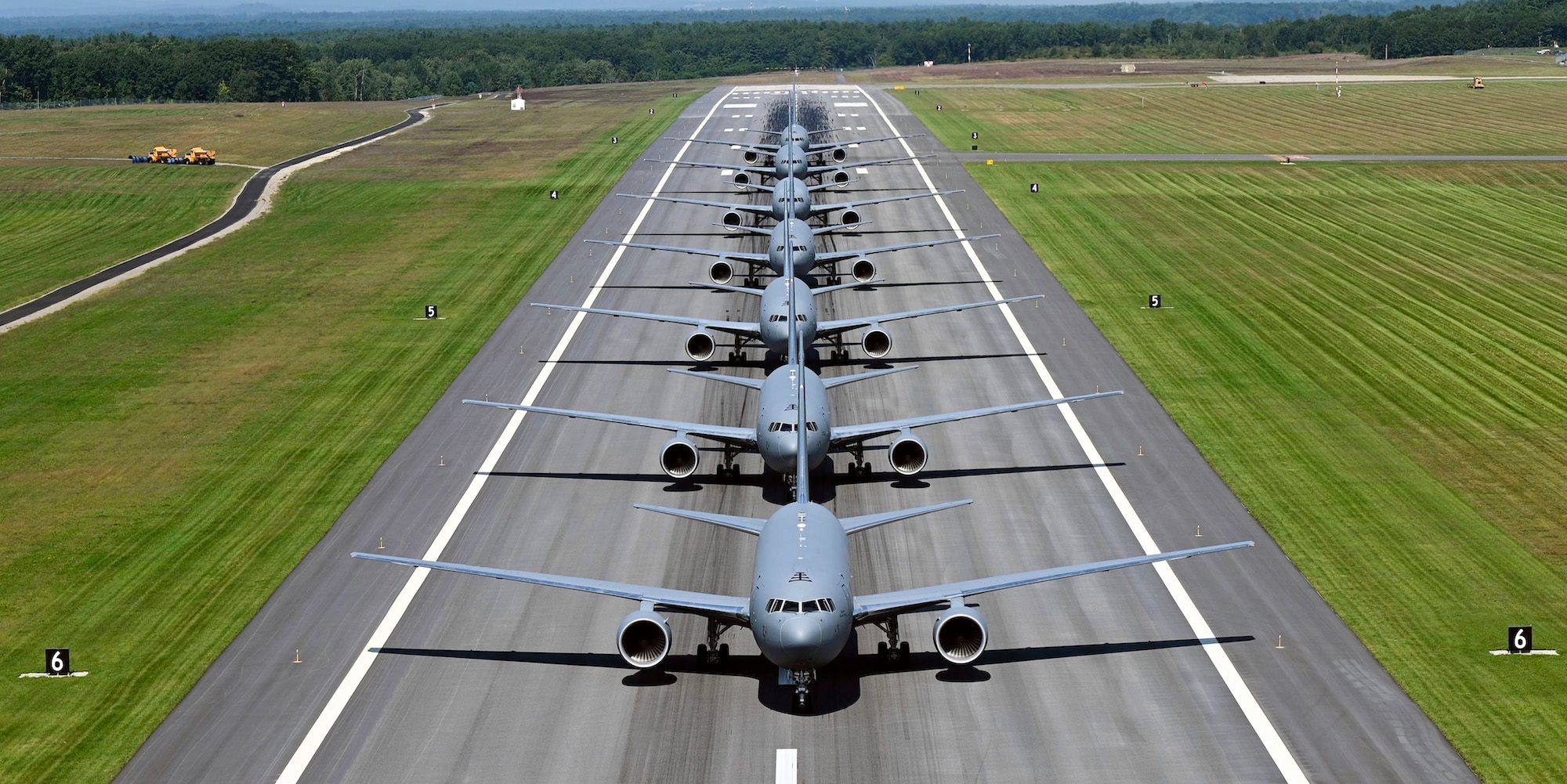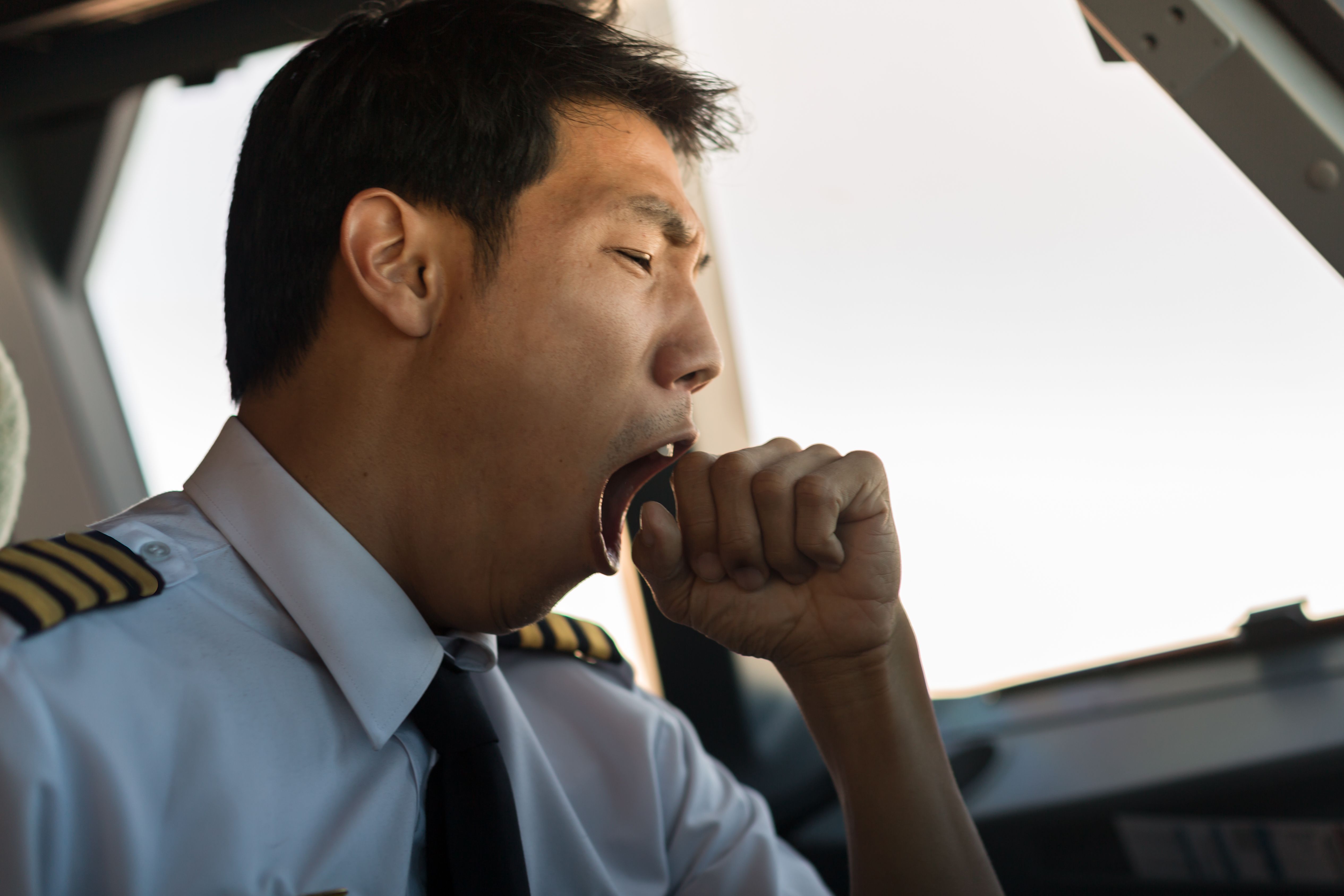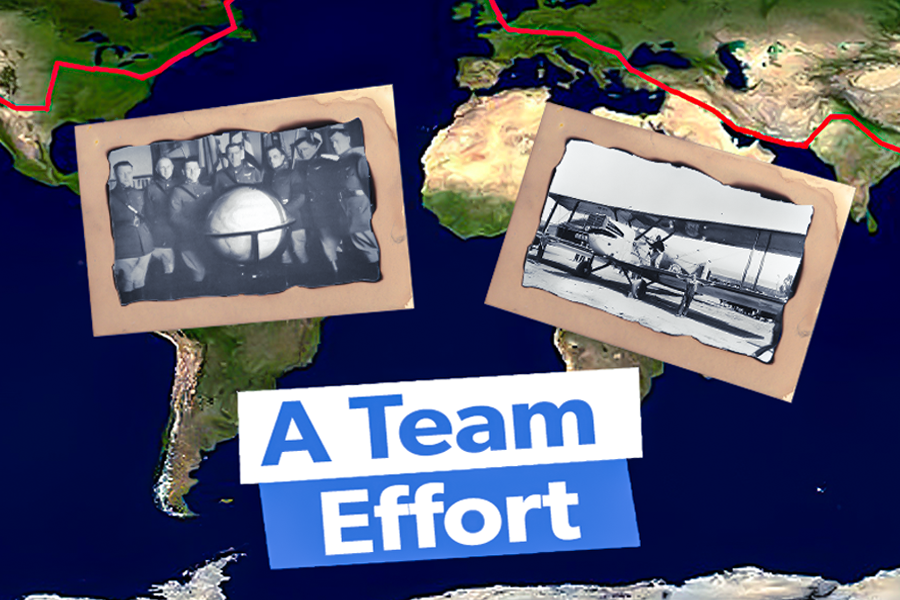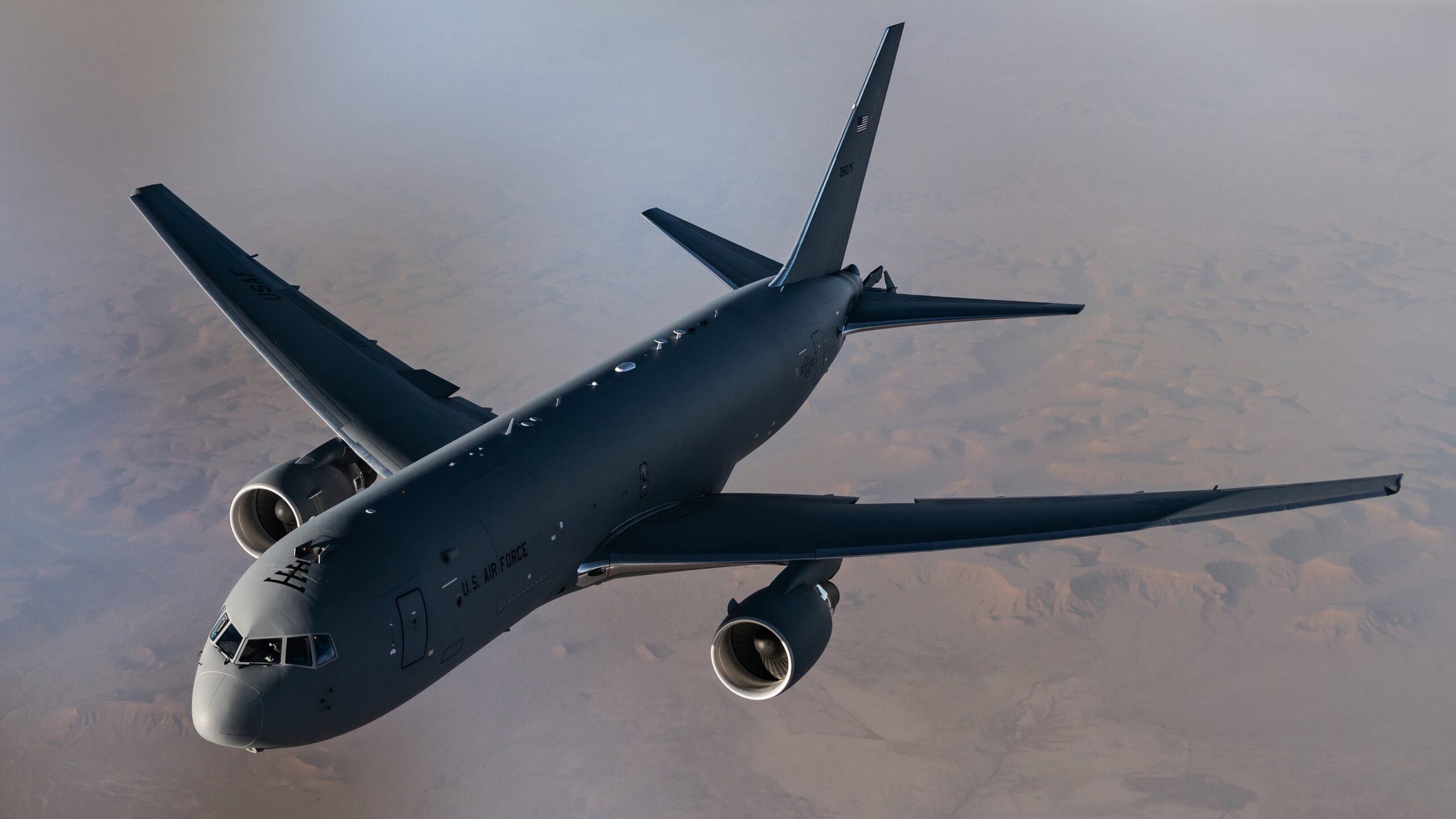Summary
- The US Air Force’s KC-46A Pegasus completed its first circumnavigation, proving its ability to transport critical cargo globally.
- Project Magellan aimed to enhance the endurance of aerial refuelers like the KC-46A Pegasus in an era of Great Power Competition.
- The KC-46A Pegasus successfully refueled various combat aircraft during its 45-hour flight, demonstrating its versatility and capabilities.
A Boeing KC-46A Pegasus recently made the first KC-46A Pegasus circumnavigation, starting from McConnell Air Force Base, Kansas, and going westbound. The US Air Force’s rationale for Project Magellan was to prove that the KC-46A Pegasus could traverse the world with its critical cargo with a June 29, 4 PM Pacific take-off as REACH 046, according to The Aviationist.
“Overcoming the tyranny of distance”
Aerial refueling tankers are intended to help add range to aircraft, and that’s why aerial refuelers like the KC-46A Pegasus are a key part of the US Air Force’s Air Mobility Command (AMC). One can read more about the KC-46A below:

Related
The KC-46: Boeing’s Military 767 With A 787-Style Cockpit
Boeing’s answer to the Airbus A330 MRTT, we examine this military tanker-transport based on the 767-200ER platform.
As such, not surprising that in a July 1 statement by the 22nd Air Refueling Wing of the US Air Force the Project Magellan planner Capt. Cody Donahue, 22nd Operations Group executive officer, shared these thoughts about Project Magellan,
“Maximum Endurance Operations [MEOs] are all about overcoming the tyranny of distance: with a 48-hour duty day, you can literally fly across the world. In an era of Great Power Competition, crews need the ability to operate longer than they have in the past, and Project Magellan is the next step in getting AMC crews experience in the game-changing new construct that is MEO.”
Project Magellan was about ensuring that the US Air Force’s KC-46A Pegasus can help with aircraft flying across the world, either as part of humanitarian operations or to employ combat power. The project may have been focused around having a KC-46A Pegasus go around the world – but other aircraft were prepositioned to support the project.
For the 45-hour flight, two KC-46s were sent to Andersen Air Force Base, Guam, one Boeing KC-135 Stratotanker to RAF Mildenhall, England, and one KC-135 to the U.S. Central Command Area of Responsibility. These were backed up by a KC-135 from RAF Mildenhall’s 100th Air Refueling Wing and a Utah Air National Guard KC-135. Yes, the US Air Force has, according to the Air & Space Forces Magazine 2024 Almanac, as of September 30, 2023 – the end of the last fiscal year – 72 KC-46As versus 376 KC-135s. Hence the need to send KC-135s to support the project.
“A shining example of the critical role”
But the KC-46A Pegasus doing the global circumnavigation was doing more than just flying around the Earth and accepting fuel. The KC-46A Pegasus was refueling Air Force B-2 Spirit bombers, C-17 Globemaster III airlifters, F-15E Strike Eagle fighter-bombers and another KC-46A Pegasus aerial refueler.
One should note that all but the B-2 Spirit were combat aircraft that were primarily assembled and designed by Boeing – and Boeing was a subcontractor for the B-2 Spirit. Below you can watch a Boeing KC-135 Stratotanker refuel the circumnavigating KC-46A Pegasus.
As Col. Brent Toth, 22nd Operations Group’s commander and the aircraft commander of the KC-46A Pegasus shared with Air & Space Forces Magazine after the flight
“Air refueling is a very specific process: you have to be at a point at a certain time. And we did that four times all around the world without missing a beat.”
Indeed, and with four pilots and two boom operators plus a flight surgeon this was all possible. But why was a flight surgeon who’s job it is to provide for the health of squadron personnel onboard?
“Pushing the brink of human performance”
This KC-46A Pegasus needed a flight surgeon onboard for more than monitoring the aircrew during the long mission. As the on-board flight surgeon USAF Capt. Jacob Heyrend, 349th Air Refueling Squadron, shared in the US Air Force statement,
“Goals for this flight were to see the combined capabilities of a modern tanker and augmented crews, pushing the brink of human performance. The final goal I had for the flight was to maintain crew, flight and mission safety and health as the aeromedical element.”
Additionally, Capt. Heyrend helped conduct a fatigue study on the flight, using proprietary diagnostics and the Montreal Cognitive Assessment. This way more data can be gathered into that old nemesis of long-haul flights: fatigue.

Related
The Importance Of Combating Fatigue As A Pilot
Managing pilot fatigue is critical to the safety of flight.
Ensuring ample fuel and limiting fatigue was important to the KC-46A Pegasus’ circumnavigation. As you can see below, the KC-46A made a successful landing at McConnell Air Force Base, Kansas, July 1, 2024.
But this was not the first time an airplane circumnavigated the Earth. Far from the first…
100 years since the first circumnavigation
Finally, it’s been 100 years since the first circumnavigation of the Earth by an aircraft. One can read more below:

Related
100 Years On: A Brief Guide To The World’s First Aerial Circumnavigation
The enduring legacy continues a hundred years after the record-setting journey.
The Friends of Magnuson Park in Seattle, Washington, are planning a weekend of commemorative events in partnership with Seattle’s Museum of Flight from September 26-29, 2024, as per firstworldflightcentennial.org. Please stay tuned for more coverage.
What are your take-aways? Please share in the thread below.


![8510709 - KC-46 conducts flight through CENTCOM AOR [Image 3 of 4]](https://static1.simpleflyingimages.com/wordpress/wp-content/uploads/2024/07/8510709.jpg)
![8511847 - 16x9 - 22 ARW completes first 45-hour nonstop KC-46 flight around the world [Image 1 of 8]](https://static1.simpleflyingimages.com/wordpress/wp-content/uploads/2024/07/8511847-16x9.jpg)